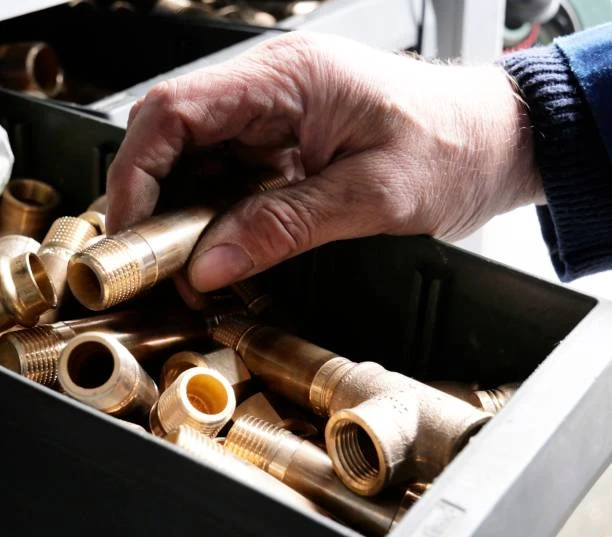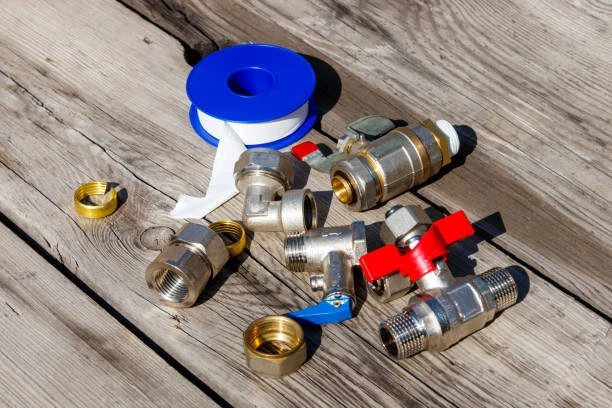Plumbing issues can often feel overwhelming, particularly for those who aren’t professionals in the field. However, my recent experience with brass fittings taught me that some plumbing repairs can indeed be straightforward and rewarding. In this article, we’ll explore the benefits of using brass fittings, how they simplify plumbing repairs, and some tips for DIY enthusiasts.
What Are Brass Fittings?
Brass fittings are components used in plumbing systems to connect different pipes and tubes. Made primarily from a mixture of copper and zinc, these fittings are known for their durability, corrosion resistance, and excellent thermal conductivity. Brass fittings come in various shapes and sizes, including elbows, tees, couplings, and adapters, making them versatile for various applications.
The Advantages of Brass Fittings
- Durability: One of the standout features of brass fittings is their longevity. Unlike plastic fittings that may degrade over time, brass fittings can withstand high pressure and temperature fluctuations without compromising their integrity.
- Corrosion Resistance: Brass is naturally resistant to rust and corrosion, making it ideal for plumbing systems exposed to moisture and varying temperatures. This resistance extends the lifespan of your plumbing repairs and reduces the need for frequent replacements.
- Easy Installation: Many DIYers find that brass fittings are relatively easy to install. With the right tools, you can make tight, leak-proof connections that can save both time and money.
- Versatility: Brass fittings can be used in a wide range of applications, from residential plumbing systems to industrial setups. Whether you’re connecting water supply lines or installing a new faucet, brass fittings can meet your needs.
My Experience with Brass Fittings
Recently, I faced a minor plumbing issue in my home—a leaky pipe joint under the sink. Initially, I felt daunted by the prospect of fixing it myself, fearing that I would make the problem worse. However, I decided to tackle it with the help of brass fittings.

Step 1: Assessing the Situation
The first step was to identify the source of the leak. After turning off the water supply and draining the pipes, I discovered that the leak was due to a worn-out coupling. Rather than calling a plumber, I opted to take on the repair myself.
Step 2: Gathering Materials
I headed to my local hardware store and purchased a brass coupling, some Teflon tape, and a wrench. I was pleasantly surprised by how affordable and accessible these brass fitting were.
Step 3: Making the Repair
With my materials in hand, I followed these simple steps:
- Removing the Old Fitting: Using the wrench, I carefully unscrewed the old coupling, ensuring that I didn’t damage the surrounding pipes.
- Preparing the New Fitting: I wrapped Teflon tape around the threads of the new brass coupling to ensure a tight seal.
- Installing the New Coupling: I screwed the new coupling onto the pipe, making sure it was snug but not overly tight to avoid damaging the threads.
- Testing for Leaks: After turning the water supply back on, I checked for any leaks. To my delight, the new brass fitting held perfectly, and the leak was gone!
Tips for Using Brass Fittings
If you’re considering using brass fitting for your plumbing repairs, here are a few tips to ensure success:
- Choose the Right Size: Always ensure that the fittings you buy are compatible with your existing pipes. Measure the diameter of your pipes before heading to the store.
- Use Teflon Tape: Applying Teflon tape to the threads of your fittings can help create a watertight seal, reducing the likelihood of leaks.
- Don’t Over-Tighten: While it may be tempting to tighten fittings as much as possible, over-tightening can lead to damaged threads or cracks in the fittings.
- Keep a Selection on Hand: Having a variety of brass fitting in your toolbox can save you time and effort during repairs. You never know when a fitting might need replacing!
- Regular Inspections: Periodically check your plumbing connections for signs of wear or leaks. Early detection can save you from larger issues down the line.
Conclusion
My experience with brass fittings transformed my view of plumbing repairs. What seemed like an overwhelming task became an empowering DIY project. The durability, ease of installation, and reliability of brass fittings made the repair not only possible but enjoyable. For anyone hesitant about tackling plumbing issues, I highly recommend considering brass fitting as your go-to solution.
FAQs
1. What are the advantages of using brass fitting over plastic fitting?
Brass fitting are more durable and resistant to corrosion than plastic fitting, making them ideal for high-pressure and high-temperature applications.
2. How do I determine the right size of brass fitting for my plumbing project?
Measure the diameter of your existing pipes and choose fittings that match that size to ensure a proper fit.
3. Can I use brass fitting for outdoor plumbing?
Yes, brass fitting are suitable for outdoor plumbing applications due to their corrosion resistance.
4. How do I prevent leaks when using brass fitting?
Using Teflon tape on the threads and ensuring that the fittings are tightened correctly can help prevent leaks.
5. Are brass fitting more expensive than other types of fitting?
While brass fitting may have a higher upfront cost, their durability and longevity often make them a more cost-effective choice in the long run.


















